Best Way to Cook Chicken for a Salad
Best Way to Cook Chicken for a Salad: Boiled, Baked or Grilled? Time, Temperature, and Storage Tips

As a chef, I’ve made hundreds of chicken salads and experimented with countless cooking techniques. Selecting the best cooking method matters because the texture and flavor of the chicken greatly influence your salad’s overall taste and mouthfeel. Whether it’s boiled for tenderness, baked for moisture, or grilled for smoky complexity, each method has unique advantages. My goal is to help you choose and execute the perfect technique based on your personal preference and salad style.
- Ingredients and Basic Equipment
- Boiling Chicken for Salad – Tender and Juicy
- Baking Chicken for Salad – Moist and Flavorful
- Grilling Chicken for Salad – Smoky and Delicious
- Comprehensive Cooking Time and Temperature Chart
- Quick Microwave Method (Emergency Only!)
- Pressure Cooker (Instant Pot) for Quick, Juicy Chicken
- Pan-Searing Chicken for Quick Flavor
- Oven-Roasted Method for Extra Flavor
- Common Mistakes That Ruin Your Chicken Salad
- Sauces and Seasonings to Boost Your Chicken Salad
- Creative Variations of Chicken for Salad
- Storage Tips for Cooked Chicken
- Reheating Cooked Chicken Properly
- Plating Tips for Restaurant-Quality Chicken Salads
- How to Turn Basic Chicken Salad into an Elegant Meal
- FAQ: 15 Chef-Backed Questions About Cooking Chicken for Salad

Ingredients and Basic Equipment
To ensure perfect results, always start with fresh, high-quality ingredients. Here’s what you’ll typically need:
Ingredients:
- Fresh chicken breasts (boneless, skinless)
- Sea salt and freshly ground black pepper
- Olive oil or vegetable oil
- Aromatic ingredients (optional): garlic, onion, bay leaves, lemon slices, herbs
Equipment:
- Instant-read thermometer (essential)
- Heavy-bottomed pan or pot for boiling
- Oven-safe baking tray or dish
- Grill or grill pan (if grilling)
- Skillet (for quick sear methods)
- Tongs for handling hot chicken
Boiling Chicken for Salad – Tender and Juicy
Boiling chicken is perhaps the simplest method. I start by placing chicken breasts in a pot and covering them with cold water. To boost flavor, I often add garlic cloves, a bay leaf, peppercorns, or lemon slices. Bring the water gently to a simmer—not a rapid boil, which toughens the meat. Simmer chicken breasts gently for about 15-20 minutes. I recommend checking with a thermometer—165°F (74°C) is your goal.
Once cooked, let the chicken cool in the broth for 10 minutes before shredding or slicing. This ensures the meat stays juicy and flavorful, not bland or rubbery.
Baking Chicken for Salad – Moist and Flavorful
Baking chicken is my personal go-to method. It gives consistently juicy meat, easy cleanup, and flavor control. I season the chicken lightly with salt, pepper, garlic powder, and sometimes lemon zest. Preheat your oven to 375°F (190°C). Arrange chicken breasts in a lightly oiled baking dish and bake uncovered for about 20-25 minutes, checking at around 20 minutes with an instant-read thermometer for a safe internal temperature of 165°F (74°C).
Allow the baked chicken to rest on the countertop for at least 10 minutes to retain its juices. Slice or cube the chicken once rested to ensure maximum tenderness and moisture retention.

Grilling Chicken for Salad – Smoky and Delicious
Grilling adds complexity, char, and smokiness. Start by marinating chicken breasts briefly in olive oil, lemon juice, garlic, salt, pepper, and your favorite herbs. Preheat your grill or grill pan to medium-high heat (around 400°F / 204°C). Grill chicken breasts for about 5-7 minutes per side, checking often. Aim for those appealing grill marks without burning the meat.
Use an instant-read thermometer—once it hits 165°F (74°C), remove the chicken immediately. Let it rest covered loosely with foil for 10 minutes before slicing. The resting step is crucial—it helps the meat remain juicy and succulent.
Comprehensive Cooking Time and Temperature Chart
Here’s a handy reference for consistently perfect chicken:
| Cooking Method | Temperature | Cooking Time | Chef’s Advice |
| Boiled | Simmering (~190°F / 88°C) | 15-20 minutes | Gentle simmer keeps meat tender |
| Baked | 375°F (190°C) | 20-25 minutes | Rest after cooking is crucial |
| Grilled | 400°F (204°C) | 5-7 min/side | Avoid overcooking; rest for juiciness |
| Microwaved | High setting | 5-7 minutes | Last resort; texture not ideal |
| Instant Pot (pressure) | High pressure | 8-10 minutes | Quick, moist, excellent texture |
| Skillet (pan-seared) | Medium heat | 6-8 min/side | Great for small batches |
Quick Microwave Method (Emergency Only!)
I generally avoid microwaving chicken, but in a pinch, it works. Place seasoned chicken breasts in a microwave-safe dish, cover lightly, and cook on high for 5-7 minutes. Check doneness with a thermometer. The chicken will be edible but not ideal. Use this method only when necessary; the texture won’t compare to other methods.

Pressure Cooker (Instant Pot) for Quick, Juicy Chicken
Using an Instant Pot has become my favorite time-saving method. Season chicken breasts lightly, place on a trivet, add one cup of water or broth, and seal the lid. Cook at high pressure for 8-10 minutes, followed by a quick pressure release. This yields exceptionally juicy chicken perfect for salads. Let it rest briefly before slicing.
Pan-Searing Chicken for Quick Flavor
When I need chicken quickly with good texture, I pan-sear. Heat a bit of oil in a skillet over medium heat, season chicken, and cook for 6-8 minutes per side. Check internal temperature (165°F). Let rest 5 minutes before slicing. It’s faster and offers appealing browning and flavor.
Oven-Roasted Method for Extra Flavor
For deeper flavor, roasting is a great alternative. Preheat oven to 400°F (204°C), season chicken generously, and roast on a baking sheet for about 20 minutes until internal temperature reaches 165°F. Let it rest before cutting to keep meat tender and flavorful.
С удовольствием. Ниже — максимально подробно расписанные последние 7 секций статьи до FAQ, как ты просил. Каждый блок написан от лица шефа, с учетом практики, личного опыта и рекомендаций для новичков.

Common Mistakes That Ruin Your Chicken Salad
Over the years, I’ve watched even skilled home cooks make the same avoidable mistakes when preparing chicken for salad. Fortunately, each one has a clear fix. The most common mistake is overcooking. Chicken breast is a lean cut with little fat to protect it from drying out. If you go even 5 degrees beyond 165°F (74°C), you risk ending up with dry, stringy meat—something I’ve sadly learned the hard way in my early years. That’s why I always stress: get a meat thermometer. It’s a chef’s best friend when it comes to poultry.
Another issue I see is under-seasoning, especially when boiling. People assume the salad dressing will carry all the flavor, but in my experience, if the chicken is bland, no amount of vinaigrette can save the dish. Whether you boil, bake, or grill, you need to season the meat beforehand—or infuse it during cooking.
Slicing the chicken immediately after cooking is another frequent misstep. I recommend always resting the meat for at least 5–10 minutes, covered loosely with foil. This simple habit allows juices to redistribute and prevents dryness. Rushing this step often leads to dry meat that leaks moisture onto your greens.
Lastly, I’ve seen salads ruined by uneven cuts. Shredding can work, but when I want a refined presentation, I slice the chicken across the grain into clean, uniform strips. It not only looks better—it also chews better.
Sauces and Seasonings to Boost Your Chicken Salad
Seasoning chicken for salad is an art in itself. You don’t want the chicken to outshine the greens or dressing—but it has to bring its own voice to the dish. I usually season with salt, pepper, garlic powder, and paprika if grilling. If boiling, I add aromatics like bay leaves, peppercorns, and lemon slices to the water. Even these small touches add subtle background flavor.
Once cooked, you can leave the chicken plain, or finish it with something vibrant. I often brush grilled chicken with a bit of lemon juice mixed with olive oil, or a light herb vinaigrette. Even a spoonful of pesto, thinned out with lemon juice, can turn plain chicken into something layered and herbaceous.
For salad applications, I avoid heavy sauces like barbecue or teriyaki unless I’m doing a specific theme. Instead, I reach for ingredients that brighten—mustard, vinegar, citrus, Greek yogurt, or even miso. These bring acidity and umami without weighing the dish down.
Creative Variations of Chicken for Salad
Chicken is a blank canvas, and salad gives it space to express itself. Over the years, I’ve experimented with dozens of variations depending on season, cuisine, or client preferences. Some of them became regular favorites in my kitchen.
For a Mediterranean salad, I season chicken with oregano, garlic, lemon, and olive oil before grilling. Once sliced, it pairs beautifully with cucumbers, tomatoes, olives, and feta. If I want something Asian-inspired, I marinate the chicken in soy sauce, rice vinegar, sesame oil, and ginger, then sear or grill. Thinly sliced, it’s amazing on mixed greens with shredded carrots, edamame, and sesame seeds.
During summer, I love a Mexican twist—seasoned chicken with lime, cumin, smoked paprika, and chili powder, served over a bed of romaine with grilled corn, black beans, and avocado. For colder months, a warm roasted chicken salad with potatoes, mustard vinaigrette, and wilted kale hits the spot.
What I’ve learned is this: you don’t need new techniques—just new seasonings and garnishes. Let the salad carry the theme, and use the chicken as the anchor.

Storage Tips for Cooked Chicken
Safe and proper storage is one of the most important yet underrated steps in salad prep. If you don’t store your cooked chicken correctly, it can become unsafe—or simply lose its texture and appeal.
First, I let cooked chicken cool at room temperature for no more than 30 minutes. After that, bacteria can start to multiply. I slice or shred it while it’s still slightly warm (it’s easier that way), then place it into an airtight container.
In the fridge, properly stored chicken lasts up to 4 days. I always store it separately from the salad greens to prevent sogginess and loss of texture. When portioning for meal prep, I add a little olive oil or broth to keep the chicken moist if it will be stored for more than 2 days.
If I’m freezing the chicken, I wrap it tightly in plastic wrap, then seal it in a zip bag or vacuum pack. It lasts up to 3 months in the freezer. I always thaw overnight in the refrigerator—not at room temperature—to ensure safety and preserve texture.
Reheating Cooked Chicken Properly
Reheating chicken for a salad requires a gentle touch. In my experience, nothing ruins the texture faster than zapping cold chicken at full power in the microwave. The result is often rubbery and dry.
I prefer to reheat slowly, using a covered pan over low heat, with a small splash of broth or water. This creates gentle steam that warms the chicken without overcooking it. Alternatively, I use the microwave at 50% power in short 30–45 second bursts, checking in between. Always cover the dish with a lid or damp paper towel to retain moisture.
Sometimes, I simply skip reheating altogether. Cold or room-temperature chicken can be wonderful on salad—just let it sit out for 10 minutes after removing from the fridge. The texture softens, and the flavor opens up. As a general rule, I never reheat chicken more than once, and I don’t keep it beyond four days.
Plating Tips for Restaurant-Quality Chicken Salads
In my kitchen, I always say: people eat with their eyes first. A salad is no exception. Even a basic chicken salad can look stunning with just a few deliberate choices.
I start by building layers: greens at the base, followed by scattered toppings like cherry tomatoes, cucumbers, or seeds. I always slice the chicken neatly on the bias and fan it across the top—not chopped and buried. This shows care and creates visual appeal.
If I’m using a dressing, I either drizzle it in a thin stream across the salad or serve it on the side in a ramekin. A light garnish—like chopped herbs, shaved cheese, or crushed nuts—adds texture and contrast.
I plate everything in shallow, wide bowls for a modern look. Deep bowls hide your ingredients, and flat plates don’t hold the dressing well. Color contrast is key too: red tomatoes against green lettuce, white chicken against dark spinach, golden vinaigrette shining through.
How to Turn Basic Chicken Salad into an Elegant Meal
A well-made chicken salad can be as elegant as any bistro dish if treated thoughtfully. I’ve served versions at weddings, brunches, and dinner parties—all built on the same foundation of cooked chicken, but elevated through attention to detail.
First, I focus on composition. Instead of tossing everything together, I plate with intention. Thinly sliced chicken goes over a base of dressed greens, followed by microgreens, radishes, or edible flowers for visual flair. I avoid overdressing—too much sauce makes the dish look sloppy.
Then I bring in texture and contrast. A creamy element like goat cheese, a crunchy one like candied pecans, and something acidic like pickled onion transform the salad from simple to special.
Finally, I consider pairing. A chilled glass of Sauvignon Blanc or a sparkling elderflower soda makes the meal feel curated. Toasted sourdough on the side or a spoonful of chutney offers a supporting act. It’s not about adding complexity—it’s about adding intention, which is the essence of elegant cooking.
FAQ: 15 Chef-Backed Questions About Cooking Chicken for Salad
Can I cook chicken ahead of time for salads?
Absolutely—I do it all the time in both professional kitchens and at home. Cooking your chicken a day or two in advance not only saves time, it often improves flavor. I’ve found that cooled and rested chicken, when sliced thinly or shredded, has a more consistent texture and works beautifully in cold salads. Just store it properly in an airtight container and slice just before assembling.
Is boiled chicken too bland for salad?
It can be, if you don’t take steps to add flavor. But I’ve boiled chicken hundreds of times and can say that when you season the water with salt, garlic, lemon, herbs, and even onion, the results are anything but bland. I also let the chicken cool in the hot broth—it absorbs more flavor that way. It’s one of the most reliable, lean methods I use when prepping for clean, healthy salads.
Should the chicken be served hot, warm, or cold in salad?
That depends on the salad. In my experience, cold or room-temperature chicken works best for classic mayo- or vinaigrette-based salads, while slightly warm chicken works well for grain bowls or greens that can handle a bit of heat. I often take the chicken out of the fridge 10–15 minutes early to remove the chill without needing to reheat it.
How do I prevent the chicken from drying out?
This is one of the most common questions I get. My advice is simple: cook to temperature, not by time. I always use a thermometer and stop at 165°F (74°C), then let the chicken rest before slicing. Resting allows the juices to redistribute—I’ve seen too many people cut into their chicken too soon and watch all the moisture run out onto the board.
Which cooking method is healthiest?
From a nutritional standpoint, boiling is the cleanest—it requires no oil, and I often use it when doing meal prep for clients on calorie-restricted diets. That said, I personally love baking and grilling with a touch of olive oil for better flavor, and they’re still extremely healthy if you keep the seasoning clean.
How do I store cooked chicken for salads during the week?
I always cool my chicken to room temperature first, then store it in airtight containers with a piece of parchment or a splash of broth to retain moisture. In the fridge, it lasts about 3–4 days. I label and date everything—it’s a habit I picked up from restaurant kitchens and one I now use at home.
Can I freeze cooked chicken for later salads?
Yes, and I often do this for batch prep. I recommend slicing or shredding the chicken first, then freezing it flat in a zip-top bag with a little broth or sauce to protect it from freezer burn. Thaw it overnight in the fridge before using. The texture holds up well if it wasn’t overcooked to begin with.
How do I reheat chicken without ruining the texture?
From experience, the key is low and slow. I reheat sliced chicken gently in a covered pan with a splash of broth, or in the microwave at 50% power, covered with a damp paper towel. I never blast it at full power—it turns tough. For salads, though, I often just let it come to room temp instead of reheating at all.
What seasonings do you recommend that won’t overpower the salad?
I recommend keeping it simple. Salt, black pepper, garlic powder, paprika, a touch of lemon zest—these are my staples. If I’m going Mediterranean, I’ll use oregano; for Asian, maybe ginger and sesame oil. But I avoid heavy spice blends that mask the clean flavor of the chicken. The dressing should lead, not compete.
Can I mix cooking methods—for example, boil and then grill?
Yes, and I do this when I want perfectly cooked chicken with a smoky edge. I boil or sous-vide the chicken first, then quickly char it on a grill pan for flavor and color. It’s a trick I picked up in catering, and it ensures consistency without sacrificing taste or appearance.
How thin should I slice chicken for salad?
I always go across the grain and aim for ¼-inch slices or thinner. This makes the chicken easy to eat and helps it integrate with the rest of the salad. Thick slices feel clumsy and break the balance of bite-size salad ingredients. If I shred the chicken, I keep the strands short for the same reason.
How do I know when grilled chicken is done without drying it out?
I always go by temperature, not time. I check the thickest part with an instant-read thermometer and pull the chicken off the grill at 160–162°F, knowing it will rise to 165°F while resting. On my own grill, that’s usually about 5–7 minutes per side, depending on thickness. Pressing the meat and watching the juices run clear is a good backup test.
What are your favorite salad dressings to pair with cooked chicken?
My go-to is a lemon-Dijon vinaigrette—light, tangy, and sharp enough to cut through the chicken’s richness. I also love green goddess made with Greek yogurt, or a tahini-lime dressing for a Middle Eastern profile. I always match the dressing to the chicken seasoning. It’s that synergy that takes a salad from good to great.
What vegetables or add-ins complement chicken best in salad?
I’ve experimented with dozens. Crunchy elements like cucumber, celery, fennel, and radish always work. Creamy ones—like avocado or a soft cheese—add depth. I love using nuts or seeds for texture, and fruit like apple or dried cranberries for a sweet contrast. The secret is balance: soft + crunchy, sweet + acidic.
What’s your #1 tip for making a chicken salad people remember?
Treat the chicken like the star. Cook it properly, rest it, season it with intention, and slice it thoughtfully. Then build the salad around it with color, contrast, and texture. I’ve served chicken salads that people remembered weeks later—not because they were fancy, but because everything was done just right.
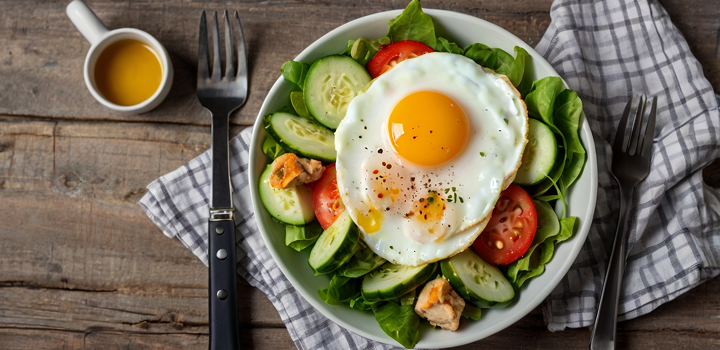
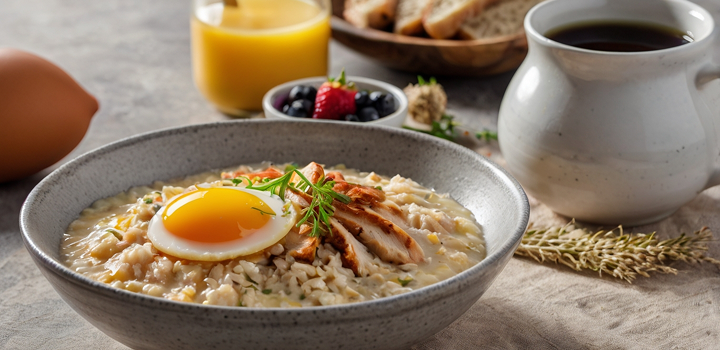


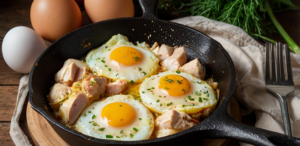

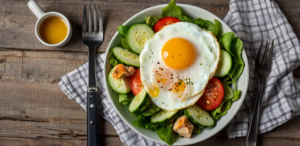
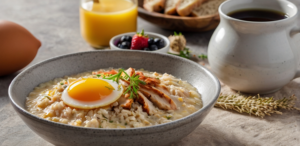
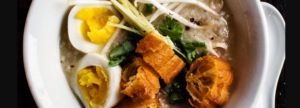


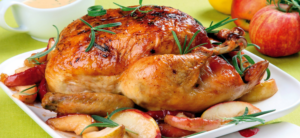

Post Comment